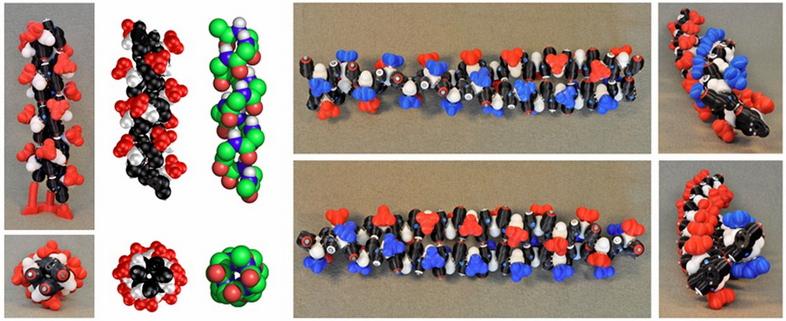Scientists are using 3D printing to examine and understand the basic building blocks of biology: molecules.
Arthur Olson, a molecular biologist at the Molecular Graphics Laboratory at the Scripps Research Institute in La Jolla, CA, has used 3D printed modules for years to explain how self-assembly driven by random motion lets viruses and other complex biological organisms put themselves together without outside influence from anything but random motion and heat.
Olson says researchers have, in the past, used computer models to visualize how protein folding works, but he adds that “looking at something on a flat screen, and actually holding an object and manipulating an object in your hands” is another matter indeed.
Now he’s hoping that using 3D printed models will help researchers understand how such deadly and complex constructs as the HIV virus function by sharing his models via the National Institutes of Health 3D Print Exchange.
The 3D printable models are available online, and the NIH 3D Print Exchange functions as an open, comprehensive, and interactive website for searching, browsing, downloading, and sharing biomedical 3D print files, modeling tutorials, and educational material. It’s a collaborative effort led by the National Institute of Allergy and Infectious Diseases, the Eunice Kennedy Shriver National Institute for Child Health and Human Development and the National Library of Medicine.
One problem in understanding the mechanics of how molecules function is that 2D computer visualizations exhibit behaviors which wouldn’t happen in the physical world. But 3D models exhibit no such “unreal” behaviors, and that makes them ideal in helping scientists and students understand how they work.
Olson isn’t alone in his contention that 3D printing can be useful to researchers in a variety of ways. Ron Zuckerman, a nanobioscientist at the Molecular Foundry at the Berkeley Lab, says it can be used to create completely artificial molecules.
To that end, Zuckerman is working to develop synthetic molecules that he calls “peptoids” which he says would have the sensitivity of proteins, but could, in theory, be made of tougher synthetic amino acids.
Zuckerman says his team uses 3D printing to provide them with a more intuitive way to understand how flexible proteins can be, and that in turn makes understanding how they fold easier to comprehend. He and his team use 3D printed models of real proteins – dubbed “peppytides” – to show students how structures like the alpha-helix assemble.
According to Zuckerman, seeing is believing – and understanding.
“I can give you this floppy thing like a necklace that’s just wiggling around and you can actually fold it,” Zuckerman told Live Science. “All of a sudden the helical folds start to become stable because all the magnets line up.”
Scientists are using 3D printing in fields from medicine to education, and this group of models are helping students and researchers understand how molecules assemble themselves. Do you know about any projects which are using 3D printing to help explain how the world works? Let us now in the Peppytides and 3D Printing forum thread on 3DPB.com.
Subscribe to Our Email Newsletter
Stay up-to-date on all the latest news from the 3D printing industry and receive information and offers from third party vendors.
You May Also Like
IperionX Inks 10-Year Deal with Wisconsin Manufacturer for 80 Metric Tons of Titanium Per Year
IperionX, the Charlotte-based supplier of sustainable titanium powders used for additive manufacturing (AM) and metal injection molding (MIM), has signed a ten-year deal with United Stars, a group of industrial...
Gastronology Launches Industrial Production of 3D Printed Food for Dysphagia Patients
Food 3D printing has, in many ways, been an additive manufacturing (AM) segment looking for the right business case. While some applications are beautiful and others may or may not...
Lockheed Martin Leads $3M Investment in Q5D’s Electronics 3D Printing System
Q5D, an original equipment manufacturer (OEM) of robotic arm, hybrid additive manufacturing (AM) systems used for wire harness production, has closed a $3 million investment round. The investment arm of...
3D Printing News Briefs, April 6, 2024: Depowdering, Cybertruck Door Handles, & More
In today’s 3D Printing News Briefs, ioTech’s digital manufacturing CLAD technology is opening up opportunities for microelectronics and additive manufacturing. Hexagon and Raytheon Technologies commercially released the Simufact Additive Process...


































